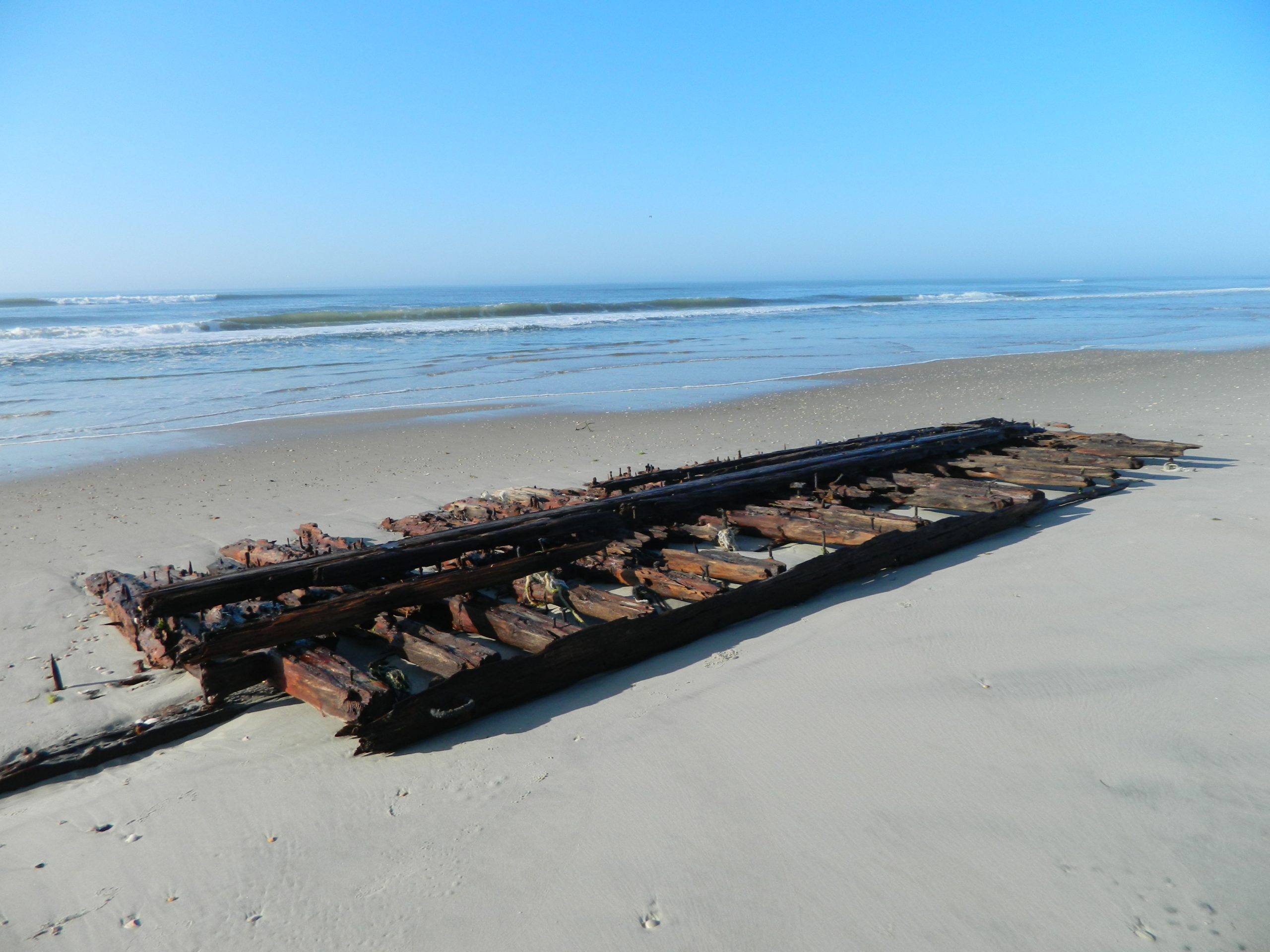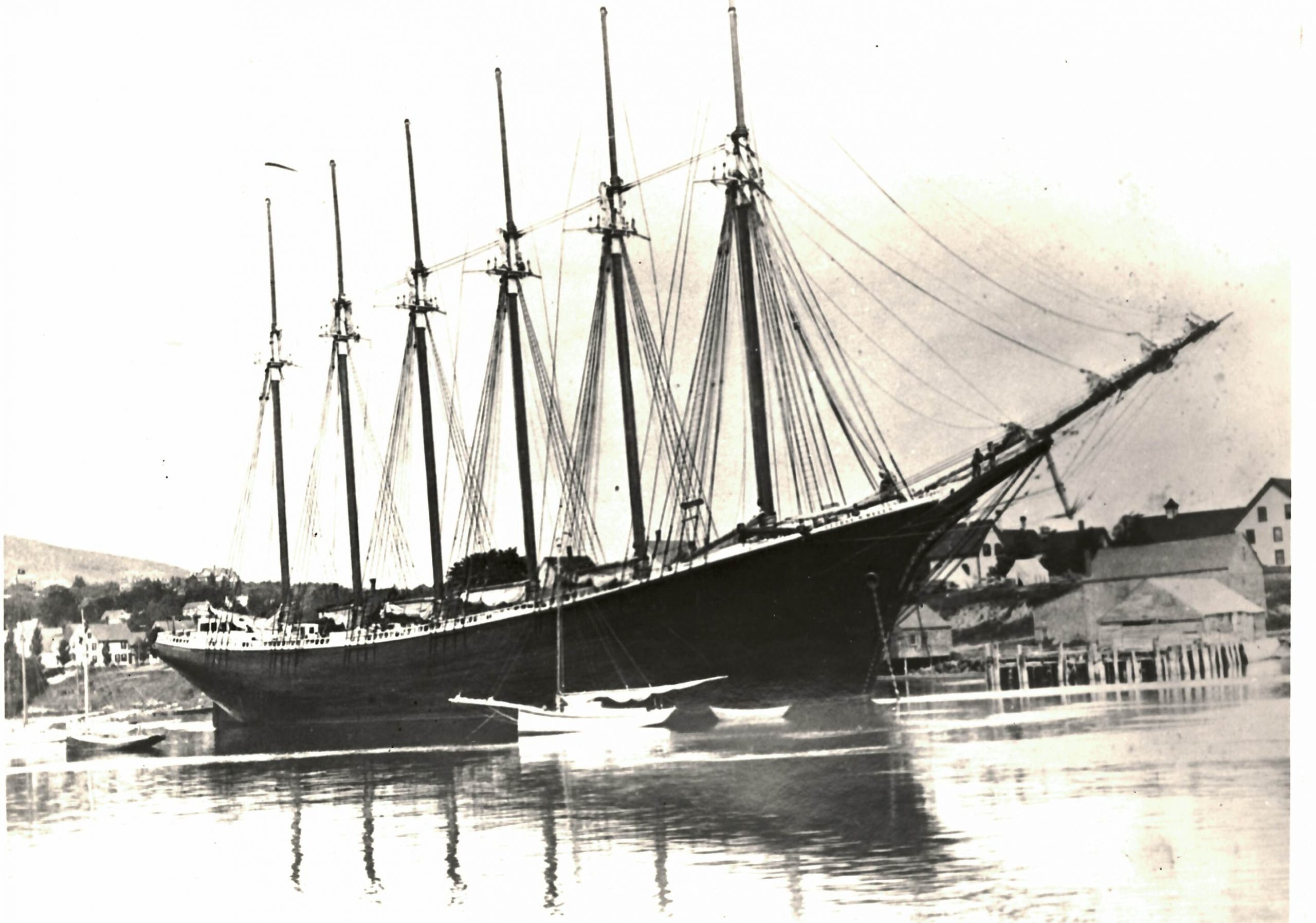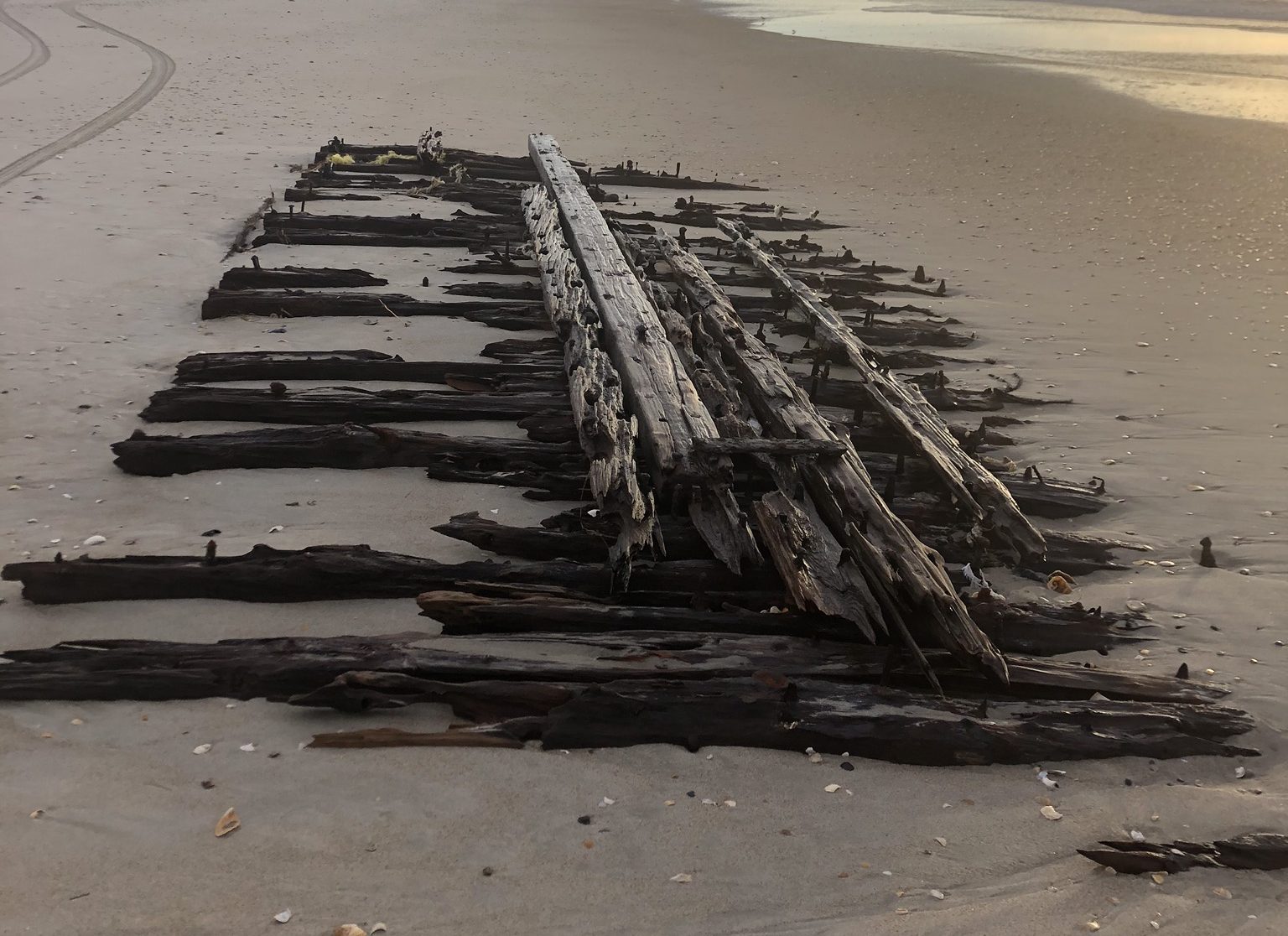
Whether due to pirates, war or storms, the Outer Banks has a history of shipwrecks.
Ships have been running aground in the Graveyard of the Atlantic since 1526, and in October, Cape Hatteras National Seashore revealed last fall in a Facebook video post that the barrier islands’ shifting sands had once again uncovered the shipwreck of the George W. Wells on Ocracoke Island.
Supporter Spotlight
The Oct. 9, 2020, post showed the ship’s remains exposed by waves kicked up by distant Hurricane Teddy.
The George W. Wells sank in a 1913 hurricane, and was one of three shipwrecks, along with the Metropolis and what’s believed to be the G.A. Kohler, that were found after Teddy, a massive and powerful hurricane, churned up surf along the East Coast as it tracked east of Bermuda in September.
Jami Lanier, the national seashore’s cultural resource manager, told Coastal Review Online that field staff were always on the lookout for shipwrecks. When they find one, they report it to Lanier, who compares photos and location data to an existing database of wrecks.
“NPS will also report the wreck to the North Carolina Office of State Archeology — Underwater Archeology Branch (UAB) so that they can update their database with new information on existing wrecks or document new wrecks,” Lanier said. “Sometimes wrecks will have a state UAB tag from previous inventories, so staff will note the existence of a tag and this will be reported to the state.”
Supporter Spotlight
Shipwrecks offer tangible evidence of the past, and give national seashore officials important information about history.
“Shipwrecks … remind us of the role that oceangoing vessels played in previous centuries,” Lanier said. “As the shoreline erodes, new wrecks once buried in sand will be revealed. That same wreck may be covered again through natural processes. This illustrates the dynamic environment of the Atlantic barrier islands.”
The George W. Wells, the first six-masted schooner, embarked on its maiden voyage in 1900, 13 years before it ran aground.

“This shipwreck has been unearthed several times over the history out here on the Outer Banks,” Ranger Dave Kent said in the video. “It is likely that this wreck will be covered again with sand shortly only to reappear in a few years.”
The first recorded discovery was in 1991, followed by another appearance in 2004.
While these shipwrecks are found and investigated, they are not moved. “It is best to leave shipwreck remains in their marine environment,” Lanier said. “Once removed from that environment, they begin to deteriorate.” While fragments of the shipwreck can be conserved, they need funding and storage space. “Shipwrecks should be treated as tangible cultural resources on the seashore for the public to enjoy when they are visible.”
“These shipwrecks are part of the stories of our shorelines. They allow us to mark time as the storms do, but the seashore is always dynamic and will forever be changing,” Kent said in the video.

Joseph K. Schwarzer, director of the North Carolina Maritime Museums system, said the Outer Banks can be especially difficult to navigate.
“The constantly shifting shoals and the dynamic weather patterns constitute a significant threat to ships even today,” Schwarzer said. “These conditions, combined with human (and) navigational error, (and) warfare, have resulted in more than 2,000 shipwrecks off Hatteras and Ocracoke over the last 400 years.”
There are state maritime museums in Hatteras, Beaufort and Southport.
Schwarzer told Coastal Review Online that there are a variety of factors that have affected the ships sailing along the coast since the European discovery of the Americas.
“Traveling to and from the Americas, sailing ships took advantage of the Gulf Stream and Labrador currents, which flow north and south, respectively, up to 4 knots,” he said. “During the Age of Sail, lack of wind could strand a vessel for days and not only critically delay the voyage but endanger the crew.”
“Following the currents ensured the vessel would continue to move, albeit slowly, without wind and speed the journey if winds were favorable.” As a result, the waters off of North Carolina became a major trade and transportation route. “Due to constantly shifting and largely unchartable shoals and volatile weather conditions, (it was) one of the most dangerous places on earth for ships,” Schwarzer said.
Shipwrecks don’t only offer information about the coast during their time, but about the people and the culture as well.
“Shipwrecks are essentially time capsules,” Schwarzer said. “They are self-contained, cultural remains all deposited at one specific time and revealing evidence of interactive subsistence, communication, and conflict among and between diverse cultures. We often learn more about past cultures and events from shipwrecks than from traditional histories.”
Changing with the times
Schwarzer said the North Carolina Maritime Museums have evolved as the culture has changed. He said the museums are constantly exploring new aspects of state, national, and international maritime history that continue to have global influence.
“Much of the public is unaware of the Graveyard of the Atlantic, the toll in ships and lives, the unsolved mysteries, the role of coastal communities, the stories of disaster and heroism.”
Joseph K. Schwarzer, Director, North Carolina Maritime Museums
“The North Carolina coast and the Outer Banks in particular have been involved, directly and indirectly, in major national and world events and new discoveries corroborate and amend our understanding of these events,” he said.
Despite the Outer Banks’ abundance of history, maritime museum visitors are often surprised.
“The most frequent comments we receive from visitors are ‘I didn’t know about any of this!’ or ‘I had no idea all this happened here!’” Schwarzer said. “Much of the public is unaware of the Graveyard of the Atlantic, the toll in ships and lives, the unsolved mysteries, the role of coastal communities, the stories of disaster and heroism.”
“History is a chronicle of who we are as individuals, communities, nations and as a world,” Schwarzer said. “Whether we are researching personal genealogies or broader histories, we are on a journey of discovering who we are: our triumphs, failures, glories, horrors, brilliance, stupidity; it is all there — warts and all. The facts of history are stubborn things; they serve as guideposts revealing the very best and the very worst in human nature and endeavor. Knowledge and understanding of our shared past allows us to better choose our future.”







